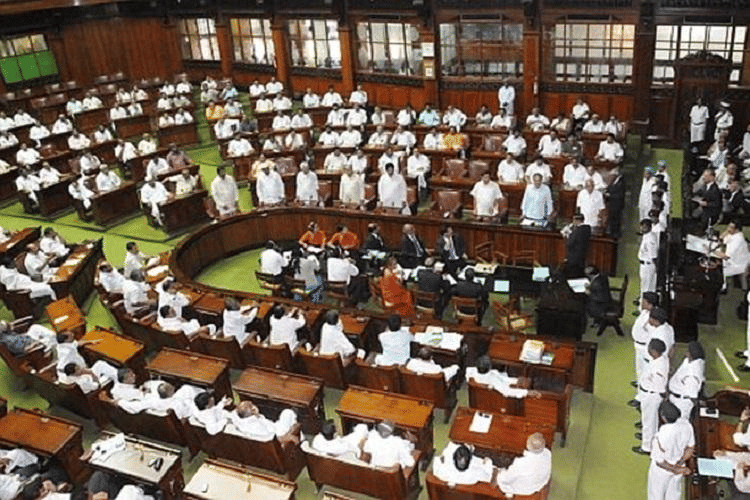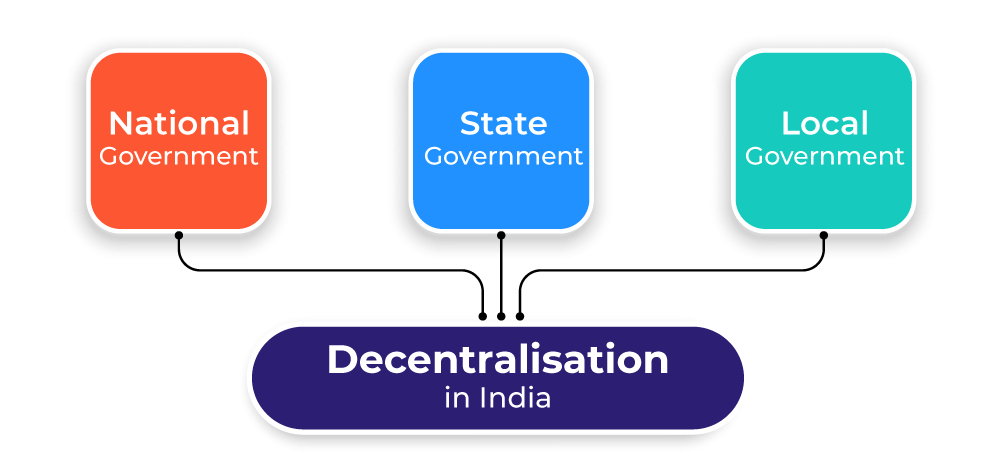Class 7 Civics Chapter 3 Notes - How the State Government Works
| Table of contents |

|
| Understanding the State Government |

|
| Who is an MLA? |

|
| Debates in the Legislative Assembly |

|
| Working of the Government |

|
| Role of MLAs in a Democracy |

|
Understanding the State Government
The government operates at three levels:
- Local level – governing cities, towns, and villages.
- State level – governing individual states.
- National level – governing the entire country.
This chapter focuses on the state government and its functions within a democracy. We will explore the roles and responsibilities of a Member of the Legislative Assembly (MLA) and ministers. The chapter also explains how citizens can express their concerns to the government and seek its help. The concept is illustrated using healthcare as a key example.
Who is an MLA?
An MLA (Member of the Legislative Assembly) is a representative elected by the people in a specific area, known as a constituency, to speak for them in the state's Legislative Assembly.
- Every state in India is divided into many constituencies. In each constituency, people vote to choose one person to represent them.
- The person elected from each constituency becomes the MLA of that area.
 BJP won in HP 2017 Elections
BJP won in HP 2017 Elections
MLAs and the Formation of Government
- MLAs can become ministers or even the chief minister of their state if their party wins the election.
If a political party wins more than half of the constituencies, it forms the ruling party, while the other parties form the opposition.
For example, in the 2017 Himachal Pradesh elections, the BJP won 44 out of 68 seats, making it the ruling party. The INC became the main opposition party with fewer seats.
Chief Minister and Ministers
- After the election, the MLAs of the ruling party choose their leader as the chief minister. In Himachal Pradesh, for instance, Shri Jairam Thakur was chosen as the chief minister.
- The chief minister then selects other MLAs to become ministers responsible for different government departments, such as health or education.
- The Governor of the state officially appoints the chief minister and the ministers.
Responsibilities of Ministers
- The chief minister and ministers manage various government departments and ensure that essential services are provided to the people.
- The Legislative Assembly is the place where all MLAs meet to discuss important issues. Some MLAs also take on dual roles as both legislators and ministers.
Debates in the Legislative Assembly
In the Legislative Assembly, MLAs participate in debates to discuss important issues, share their opinions, and ask questions.
Ministers respond to the questions raised by MLAs, explaining the government's actions and strategies.
Any decisions made by the government, such as how to tackle problems, need to be approved by the MLAs in the Legislative Assembly.
These debates allow MLAs to express the concerns of the people from their constituencies, such as problems related to healthcare, water supply, and sanitation.
 Legislative Assembly
Legislative Assembly
Example: Addressing Healthcare Concerns
Imagine a situation where a diarrhea outbreak occurs in the state. MLAs from affected areas might raise concerns about how the health department is handling the crisis. Possible actions suggested by MLAs to resolve the issue could include:
- Increasing the number of doctors and nurses in hospitals.
- Distributing ORS packets to patients.
- Improving water supply and sanitation to prevent future outbreaks.
Along with these immediate measures, MLAs might also propose long-term solutions like building new healthcare centers, hiring more medical professionals, and maintaining cleanliness in public areas.
By addressing these issues, both the ruling party and the opposition can work together to improve the quality of life for all citizens.
Working of the Government
The state government has the authority to make new laws related to healthcare, sanitation, and other public services.
- For instance, they might pass a law that requires municipalities to build more public toilets or ensure that every village has an appointed health worker.
- These laws are made in the state's Legislative Assembly, and it is the responsibility of various government departments to implement them.
- While laws for the entire country are created in Parliament, state laws focus on specific issues relevant to the state.
Role of MLAs in a Democracy
- In a democracy, people elect their representatives, the MLAs, to govern and make decisions on their behalf.
- The party with a majority forms the government, and some MLAs from this party become ministers in charge of different departments.
- The Legislative Assembly has the power to approve the work done by these departments, ensuring that the needs of the people are met and that government actions align with the interests of the citizens.
By understanding the roles of MLAs, ministers, and the Legislative Assembly, we can better appreciate how our state governments function and how they address the issues faced by the people.
|
66 videos|336 docs|46 tests
|
FAQs on Class 7 Civics Chapter 3 Notes - How the State Government Works
| 1. What is the role of an MLA in the Legislative Assembly? |  |
| 2. How does a debate in the Legislative Assembly influence decision-making? |  |
| 3. What are the main functions of the state government? |  |
| 4. How do MLAs ensure that the government is accountable to the public? |  |
| 5. What is the process for electing an MLA? |  |

|
Explore Courses for Class 7 exam
|

|














